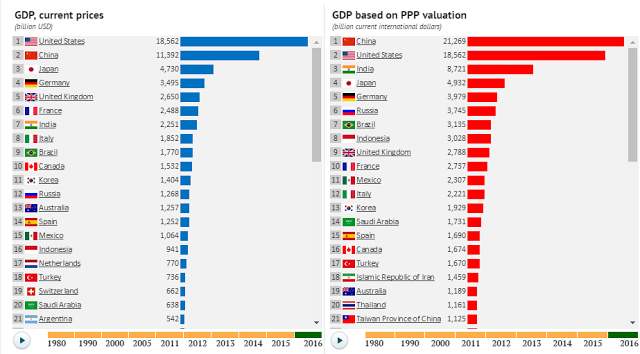Russia’s 2011–20 State Armaments Program’s major benchmarks emphasised the percentage of modern equipment in service: 30% of total by 2015 and 70% by 2020. Their success in that pursuit has been mixed, and exact numbers are hard to find, but the share of modern equipment in service has clearly been increasing.
Russia’s Deputy Defense Minister said in April 2016 that the military had received some 1,200 ‘new and modernized aircraft’ since 2013—250 new planes, 300 new helicopters and 700 modernised aircraft. Essentially all the new fixed-wing combat aircraft are modern derivatives of 1980s Soviet-era aircraft: the Su-27 ‘Flanker’ (Su-30; Su-35 and Su-33), Su-25 ‘Frogfoot’, MiG-29 ‘Fulcrum’ (including the forthcoming MiG-35) and the MiG-31 ‘Foxhound’. These ‘4th generation’ airframes outfitted with modern, digital avionics and sensors are commonly referred to as 4.5 generation fighters, and lack the intrinsic design features of 5th generation aircraft like the F-35.
Russia’s 5th generation fighter, the PAK-FA, have been continually delayed due to high costs and intermittent support from development partner, India. Just eight prototypes of the vaunted aircraft exist today, and the latest plans expect to see just 12 production aircraft acquired by 2020
It is a practical and cost-effective plan. The US Navy began transitioning from the 80s-era F/A-18 Hornet to the modern Super Hornet in the early 2000s. Those 4.5 generation fighters are, by all accounts, still very capable and require less development than brand new airframes would. And given that both of the US military’s 5th generation fighter programs have suffered significant setback
Factors Going Against Russia
* Aging Population demographic and population will decline by 15-20% by 2050
* Oil and gas dependent and oil and gas could see long term bear market and lower relevance with substantial amounts of solar and battery deployment
* Rise of Asia and other countries could see Russia drop to third tier power category
Russia’s economy has been highly dependent upon oil and gas. In 2012 oil, gas and petroleum products accounted for over 70% of total exports. In 2001, oil and gas generated some 30 percent of russia’s federal budget revenues. In 2015, the figure reached 44 percent. The dependence varies because of oil prices and not from any successful diversification of the economy.
Solar and wind energy are increasing and electric cars and ridesharing are increasing. These technologies will reduce the demand for oil and gas and seem likely to keep oil and gas prices relatively low and blunt any price spikes.
Russia produces about the same amount of oil and Saudi Arabia.
Russia currently has about 30 times the amount of nuclear weapons as Pakistan.
On a PPP GDP basis Russia has an economy equal to Saudi Arabia, Pakistan and Poland combined.
Russia’s population is flat to about 2030 and then will likely decline by about 15-20% by 2050.
Russia could drop out of the top 10 world economies to around 20th.
China is increasingly becoming independent of Russia for military technology. India will likely also become less dependent over time.
If oil and gas prices were to remain low and Russia still had not developed other industries, it would not be unreasonable to expect Russia’s economy to go from less than half of the UK on a nominal basis to one quarter or one eighth in 2050. Russia could drop down to around Pakistan’s world power level. A poor economy with a lot of nuclear weapons.

Brian Wang is a Futurist Thought Leader and a popular Science blogger with 1 million readers per month. His blog Nextbigfuture.com is ranked #1 Science News Blog. It covers many disruptive technology and trends including Space, Robotics, Artificial Intelligence, Medicine, Anti-aging Biotechnology, and Nanotechnology.
Known for identifying cutting edge technologies, he is currently a Co-Founder of a startup and fundraiser for high potential early-stage companies. He is the Head of Research for Allocations for deep technology investments and an Angel Investor at Space Angels.
A frequent speaker at corporations, he has been a TEDx speaker, a Singularity University speaker and guest at numerous interviews for radio and podcasts. He is open to public speaking and advising engagements.






Comments are closed.